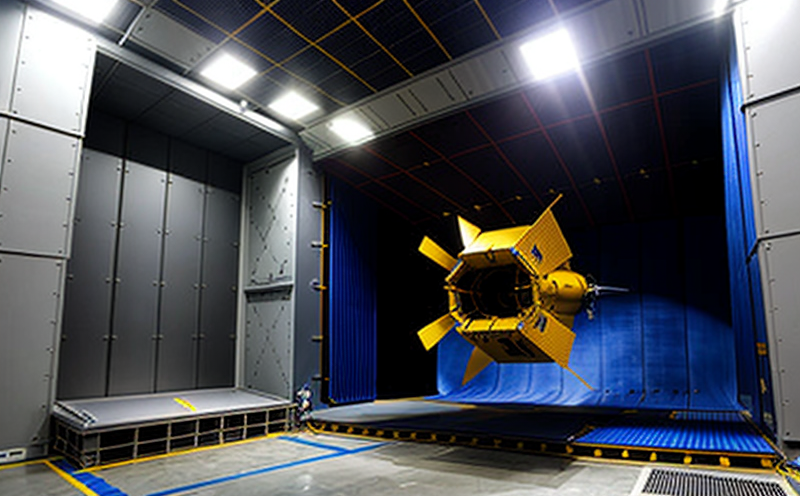Wind tunnel testing for spacecraft re-entry conditions and heat shielding performance
Reaching New Heights Wind Tunnel Testing for Spacecraft Re-entry Conditions and Heat Shielding Performance with Eurolab
In the rapidly advancing world of space exploration, ensuring the safe re-entry of spacecraft into Earths atmosphere is a critical concern for businesses involved in satellite design, launch, and recovery. The extreme temperatures and aerodynamic forces generated during atmospheric entry can be catastrophic if not properly understood and mitigated. This is where Eurolab comes in as a leading provider of wind tunnel testing services specifically designed to simulate and analyze spacecraft re-entry conditions and heat shielding performance.
What is Wind Tunnel Testing?
Wind tunnel testing involves using high-speed airflow within a controlled environment to simulate the aerodynamic forces that spacecraft experience during atmospheric entry. This laboratory service enables businesses to test their spacecraft designs, thermal protection systems (TPS), and other critical components under realistic re-entry conditions. By replicating the stresses of atmospheric entry, Eurolabs wind tunnel testing services provide invaluable insights into the performance and integrity of spacecraft systems, ensuring that they can withstand the harsh conditions of re-entry.
Why Wind Tunnel Testing is Essential for Businesses
The importance of wind tunnel testing cannot be overstated. With the increasing demand for satellite launches and space exploration initiatives, businesses must prioritize the development of reliable and efficient spacecraft designs. Eurolabs wind tunnel testing services offer numerous benefits that can make all the difference in achieving mission success
Improved Safety Wind tunnel testing enables businesses to identify potential design flaws and weaknesses before they become critical issues during actual re-entry. This proactive approach reduces the risk of catastrophic failures, ensuring a safer return for spacecraft and personnel.
Enhanced Performance By simulating realistic re-entry conditions, Eurolabs wind tunnel testing helps optimize spacecraft designs for improved aerodynamics, reduced drag, and enhanced thermal protection. This results in increased efficiency, longer mission durations, and cost savings.
Reduced Development Time and Cost Wind tunnel testing accelerates the development process by allowing businesses to identify and address design issues early on. This minimizes the need for costly redesigns, retests, and delays, saving time and resources in the long run.
Increased Mission Success Rate By leveraging Eurolabs wind tunnel testing services, businesses can significantly improve their mission success rate. With a deeper understanding of spacecraft performance under simulated re-entry conditions, they can develop more reliable systems and mitigate potential risks.
Key Benefits of Wind Tunnel Testing with Eurolab
Eurolabs wind tunnel testing services are tailored to meet the unique needs of each client, offering
High-Fidelity Simulation Our state-of-the-art wind tunnels accurately replicate the complex interactions between spacecraft, atmosphere, and heat shielding, providing actionable insights into performance and integrity.
Customized Testing Programs Eurolab works closely with clients to develop targeted testing programs that address specific design concerns, ensuring maximum efficiency and effectiveness.
Expert Analysis and Recommendations Our team of experienced engineers provides detailed analysis and recommendations for improvement, enabling businesses to optimize their spacecraft designs and TPS.
Scalability and Flexibility Eurolabs wind tunnel testing services can be adapted to accommodate a wide range of spacecraft sizes, materials, and configurations, making us an ideal partner for various space-related projects.
Frequently Asked Questions
What types of spacecraft are suitable for wind tunnel testing?
Eurolabs wind tunnel testing services are applicable to a broad range of spacecraft designs, including satellites, spaceplanes, re-entry vehicles, and more.
How does Eurolab simulate realistic re-entry conditions?
Our state-of-the-art wind tunnels utilize advanced computational fluid dynamics (CFD) models, high-speed airflow, and specialized equipment to accurately replicate the stresses of atmospheric entry.
What kind of data can I expect from Eurolabs wind tunnel testing services?
Our team provides comprehensive analysis reports, including detailed performance metrics, thermal protection system (TPS) assessments, and design recommendations for improvement.
Can I integrate Eurolabs wind tunnel testing with my existing development process?
Yes, our services are designed to be seamlessly integrated into your project timeline, ensuring minimal disruption and maximum benefit.
Conclusion
In the highly competitive world of space exploration, staying ahead of the curve requires innovative solutions and cutting-edge technologies. Eurolabs wind tunnel testing services for spacecraft re-entry conditions and heat shielding performance offer businesses a crucial advantage in achieving mission success. By leveraging our expertise and state-of-the-art facilities, clients can optimize their spacecraft designs, enhance performance, and ensure a safer return from atmospheric entry.
At Eurolab, we are committed to supporting the advancement of space exploration by providing world-class wind tunnel testing services. Our team is dedicated to helping businesses overcome the challenges of re-entry, ensuring that their spacecraft systems operate efficiently and effectively in even the most extreme conditions.
Join us on this journey into the vast expanse of space, where innovation meets precision and success awaits those who dare to reach new heights with Eurolab.




